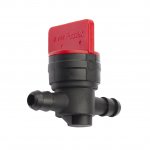I own the machine from new. Took it out of the box myself about 1996.
I guess yardman fitted the engine to their mower and fitted the manual choke and put the small screw in place to stop the auto choke facility that came already fitted to the engine. Easier to put the stopper screw in place than remove the auto choke linkage. I am going to take a look for some carburetor repair kits as I think it's leaking some fuel into the block while its sitting idle.
I guess yardman fitted the engine to their mower and fitted the manual choke and put the small screw in place to stop the auto choke facility that came already fitted to the engine. Easier to put the stopper screw in place than remove the auto choke linkage. I am going to take a look for some carburetor repair kits as I think it's leaking some fuel into the block while its sitting idle.

